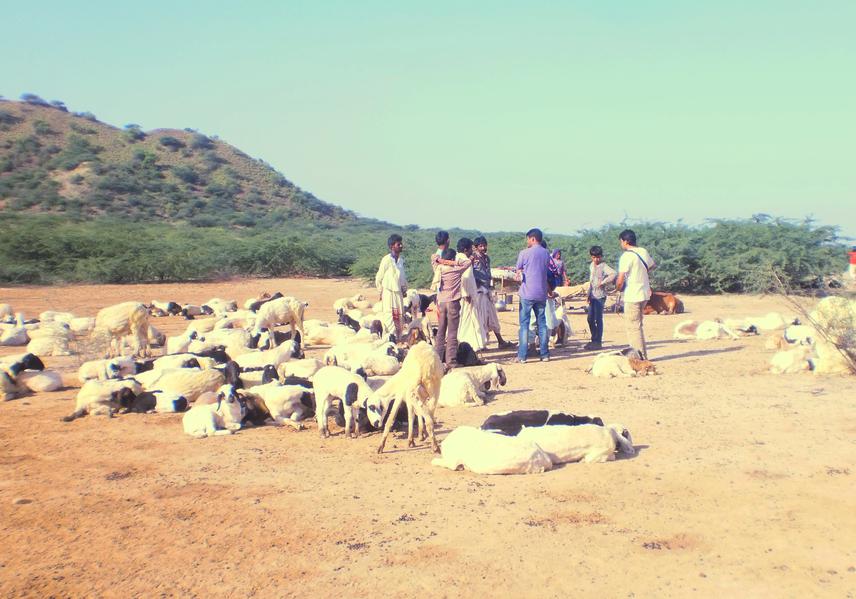Anirudhkumar Vasava
Indian wolf (Canis lupus pallipes) faces several anthropogenic threats in India’s Kutch region, which remain little studied. This study through field surveys and geospatial modelling, aims to assess the current status of wolves, habitat suitability and human –wolf interactions in the arid landscapes of Kutch, and thus assist in formulating a landscape-level wolf conservation strategy for Kutch and similar habitats elsewhere in India.

Team leader interviewing the pastoralists in Kutch.
Around 1000-2000 Indian wolves (Canis lupus pallipes) are expected to survive in isolated pockets in India. Since most of these wolves exist outside protected areas, they are vulnerable to persecution and habitat destruction. Although legally protected in India, wolves are perceived as pests and have been long persecuted. Studies carried out on wolves in India have not adequately explored how this species responds to different landscape parameters and anthropogenic changes in a multi-scale perspective. Arid landscapes of Kutch in Gujarat have been seen as the potential regions which could offer long term survival of wolves. But recent surge in development in this region has led to rapid changes in traditional land-use pattern and peoples’ socio-economic status, which is likely to affect the persistence of wolves in this landscape. Without reliable information to validate the current distribution and status of wolves from their former ranges; the species will not receive the conservation attention it deserves.
This study intends to identify viable wolf areas and formalize management strategies for wolf conservation in Kutch region. Specific objectives are to:
(1) determine status and distribution of wolves;
(2) model wolf occupancy across the landscape;
(3) understand people’s perceptions and attitudes towards wolf. The ultimate aim is to generate an updated wolf distribution map and identify critical wolf areas and assist in formulating a landscape-level wolf conservation strategy for Kutch and similar habitats elsewhere in India.
This study will combine various techniques and methods, ranging from field surveys and public interviews to GIS tools for modelling the covariates that describe habitat suitability for wolves in arid landscapes of Kutch. This will allow assessing a set of proposition about key determinants of wolf distribution and determining site-suitability for the species. The probable outcomes will substantially enhance current understanding of the ecological and socio-economic drivers of wolf distribution and their future persistence. The results, while affording wildlife managers an important means to understand the persistence of wolves in human dominated landscapes, will also provide a guide map for investing the limited conservation resources.This study may reveal potential trends in wolf population due to changes in this landscape over the past two decades which could aid in development of predictions about wolf persistence in future, to propose more realistic and effective conservation plans.